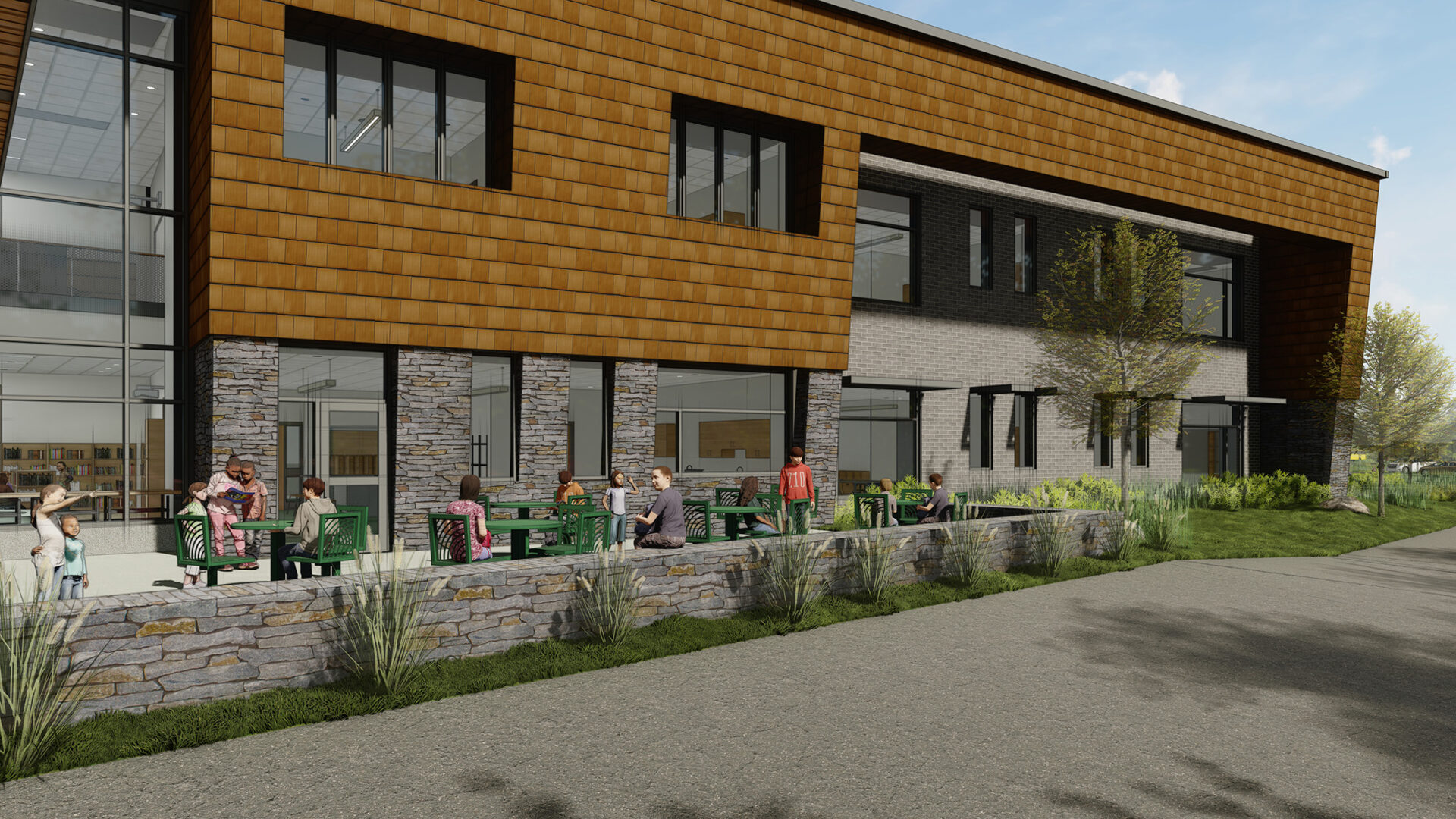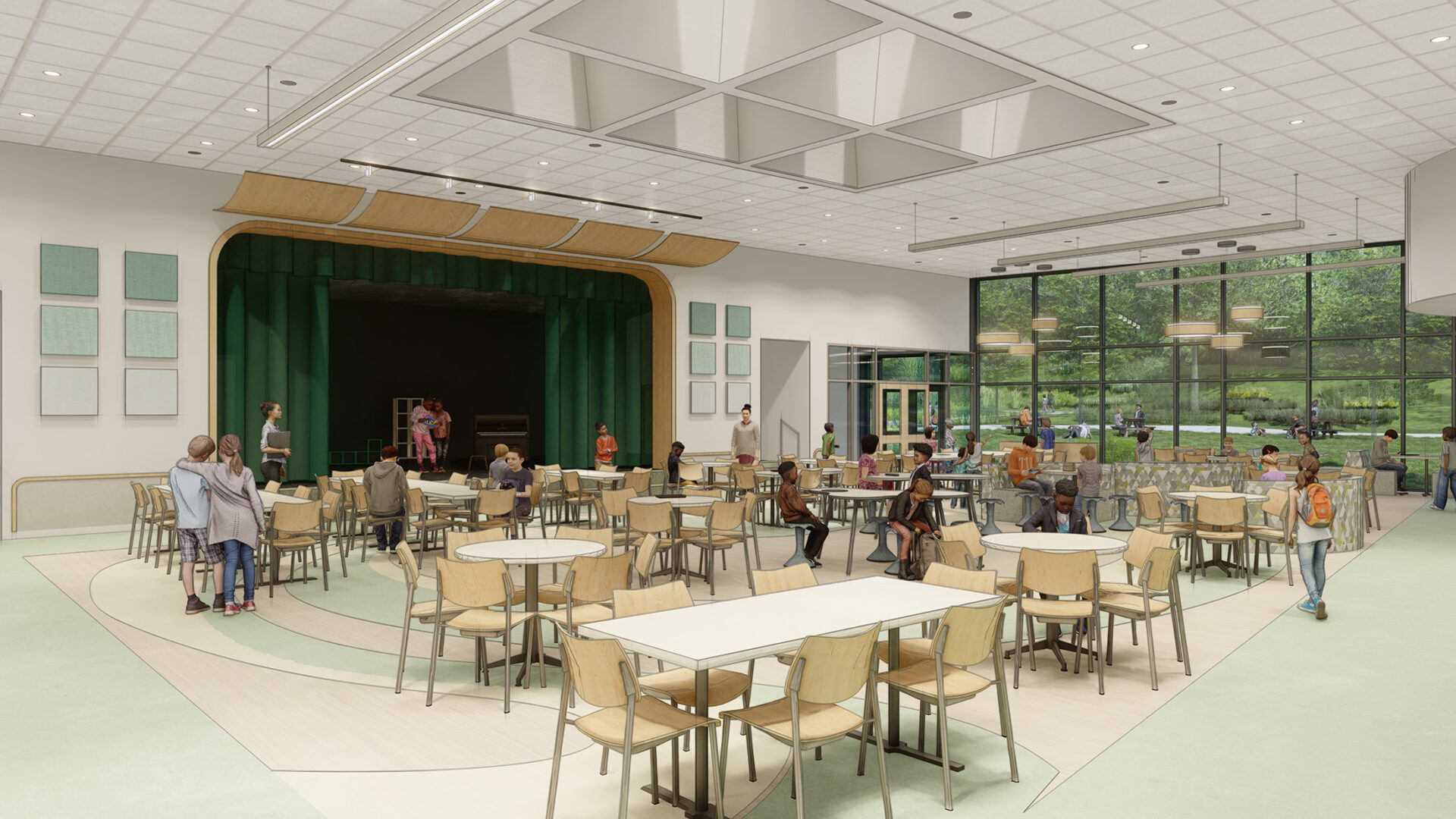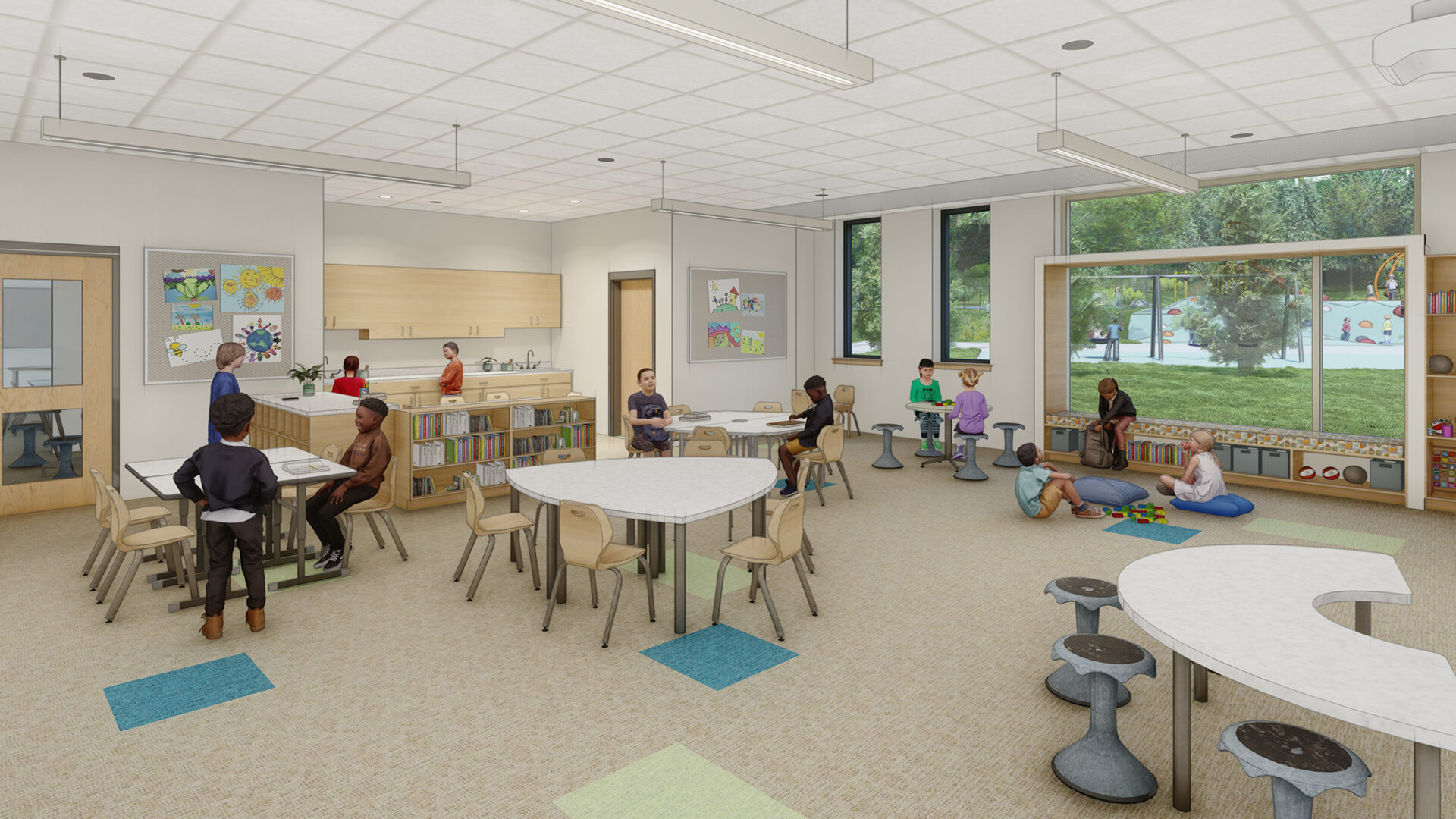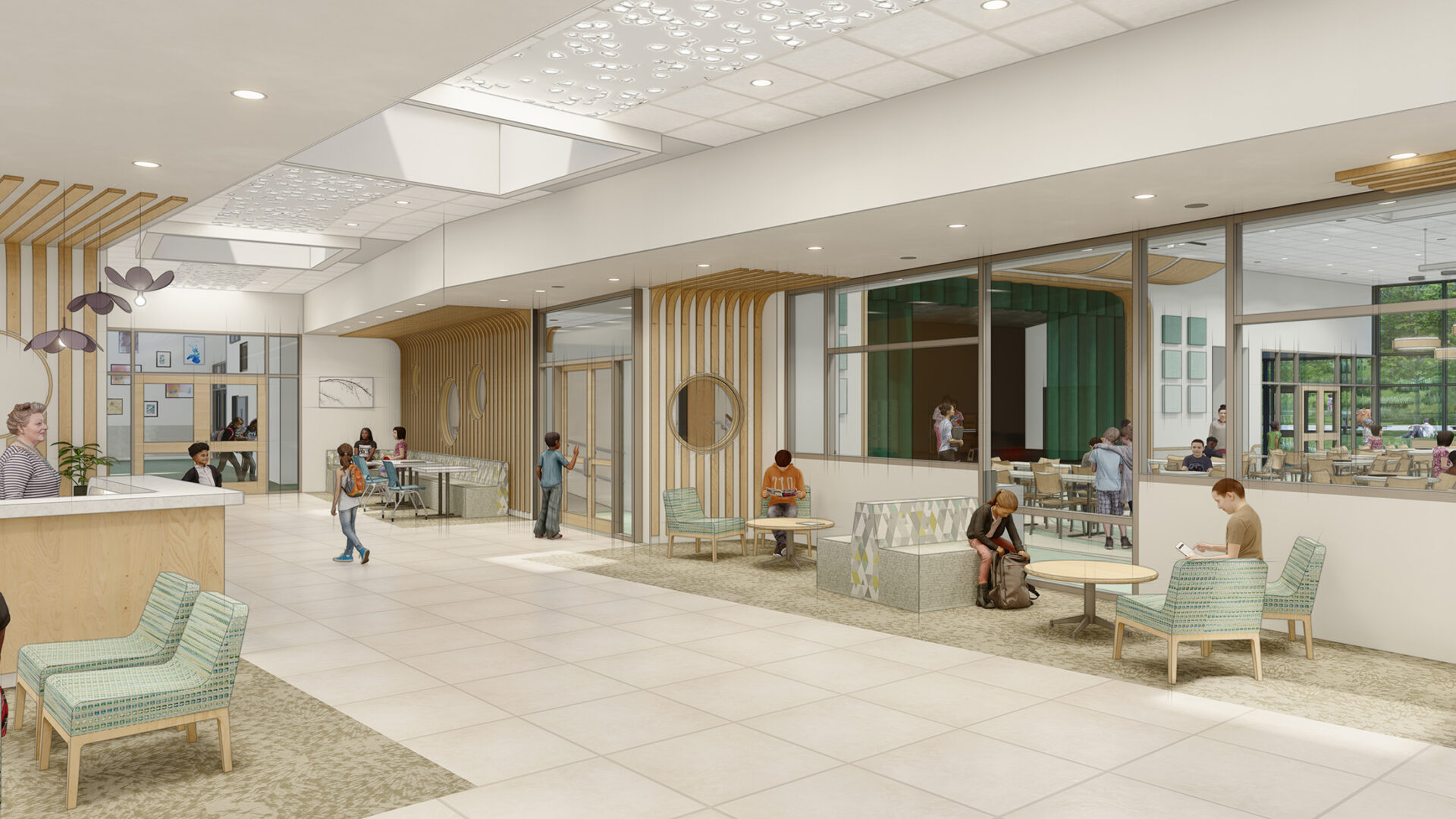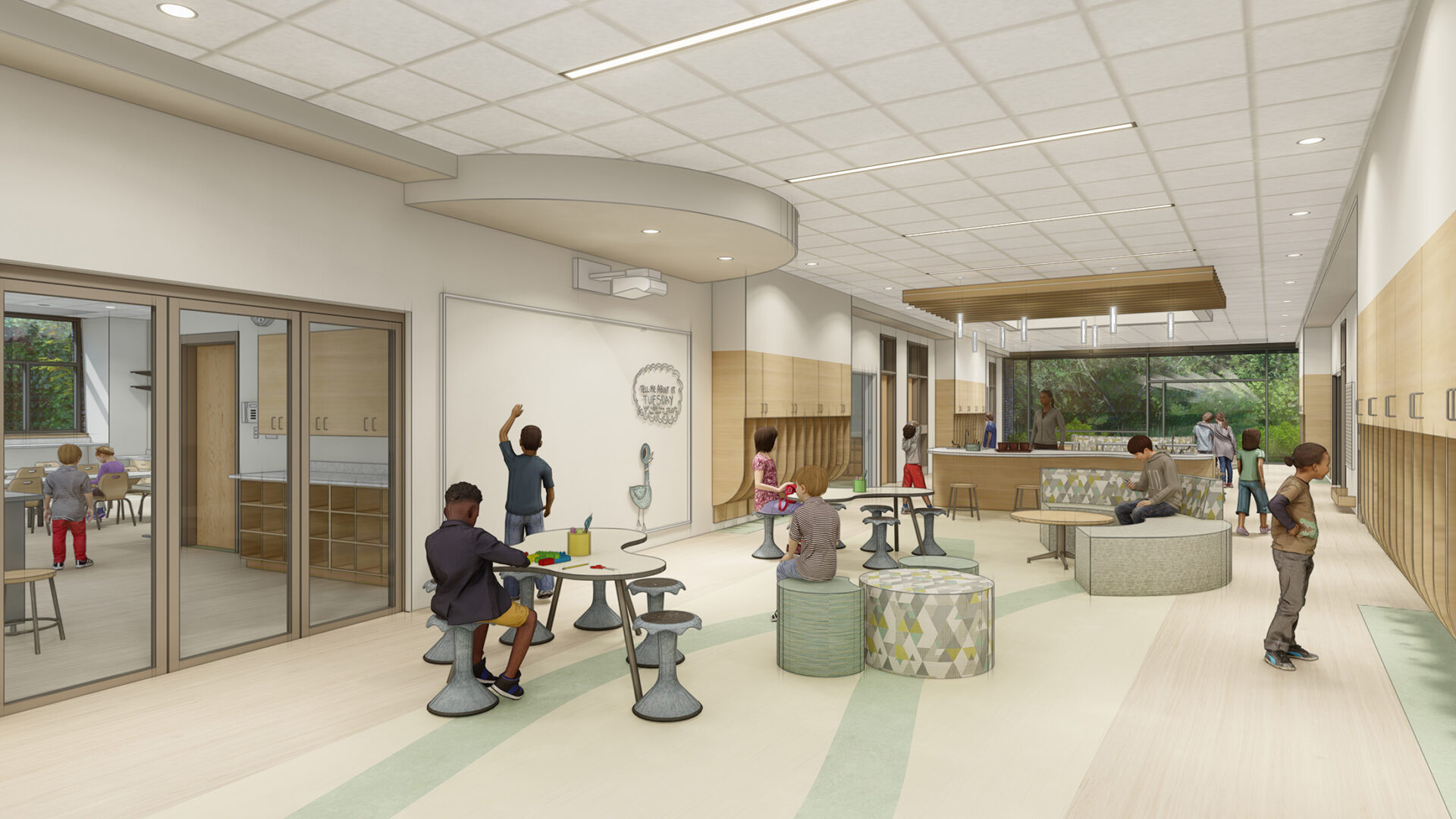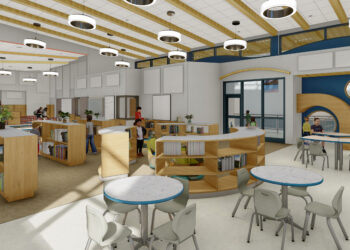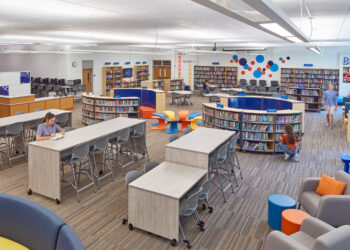Early observations of teaching and learning, coupled with an expansive visioning and programming effort with Westwood teachers, students, and staff, revealed the district’s strong belief in student self-discovery and education as playful learning. As such, one overarching guiding principle was to design a learning environment expressed similarly to that of a children’s museum to support hands-on and experiential learning. During visioning, district leadership coined the term “spill-ability” and described an idealized environment where activity and curriculum could “spill out” beyond the classroom walls.
To support this vision, the building is organized into flexible grade level neighborhoods, each with an extended learning commons filled with agile furniture, curriculum-based tactile elements, low- and high-tech elements, and a variety of museum-like interactive zones. Specifically, areas are dedicated to science/discovery; art and making; presentation and dramatic performance; and quiet/small group work.
Further supporting education as playful learning and the museum-like environment, the building design positions the media center at the intersection of four grade level neighborhoods. Art and STEAM rooms, both with operable partitions, are adjacent to the media space and allow for content and activity to spill into the media center to create a centralized, interdisciplinary “Curiosity Commons” where literacy, arts, and sciences converge.
Educational Design Features
- Grade level learning communities with flexible academic pairings
- Small group space for breakout and tiered intervention supports
- A children’s museum-like environment to support education as playful learning throughout the building
- Space to support spilling of content and activity
- Opportunity for blurring indoor and outdoor learning
- A STEAM-based media “Curiosity Commons” that blends literacy, arts, and sciences
- Teaching Artistic Behaviors – student-centered art spaces that position students as decision-makers
- Flexibility at a variety of scales, including alternative dining areas, to support various teaching methods, inclusionary practices, learning preferences, student agency, choice, and social/emotional wellness
- Learning on display, including final products and works in progress
